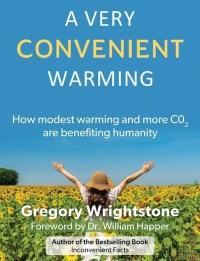 A systematic review of climate trends and observational data by an eminent climate scientist has found no evidence to support the claim of a climate crisis.
A systematic review of climate trends and observational data by an eminent climate scientist has found no evidence to support the claim of a climate crisis.
In his annual State of the Climate report, Ole Humlum, emeritus professor at the University of Oslo, examined detailed patterns in temperature changes in the atmosphere and oceans together with trends in climate impacts. [bold, links added]
Many of these show no significant trends and suggest that poorly understood natural cycles are involved.
And while the report finds gentle warming, there is no evidence of dramatic changes, with snow cover stable, sea ice levels recovering, and no change in storm activity.
Professor Humlum said:
“A year ago, I warned that there was great risk in using computer modeling and immature science to make extraordinary claims. The empirical observations I have reviewed show very gentle warming and no evidence of a climate crisis.”
GWPF director, Dr. Benny Peiser said:
“It’s extraordinary that anyone should think there is a climate crisis. Year after year our annual assessment of climate trends documents just how little has been changing in the last 30 years. The habitual climate alarmism is mainly driven by scientists’ computer modeling rather than observational evidence.”
Read Ole Humlum’s State of the Climate 2021 (pdf)






The facts are that back in he 1970s it was Global Cooling and a New ICE Age was coming but since then they have done a full 180 and its Global Warming
To write a major programme for the world’s climate from scratch is a long and arduous task. Most programmers take a short-cut. They simply adopt an existing model and tailor it to the specifications of the commissioning scientist.
As a result, most – If not all – modern GCMs have at the heart of their coding an algorithm developed for the first ever computer programme in the early 1950s. It was devised by English mathematician, physicist and meteorologist lewis Fry Richardson ( 1881 – 1953). Working with American meteorologist Jule Gregory Charney (1917-1981), he developed a climate model to run on the only computer then available, at Princeton University in the USA. The computer was known as the Electronic Numerical Integrator and Computer (ENIAC).
Just like modern programmers, Richardson and Charney did not write their programme from scratch. They started with a series of differential equations developed in 1917 to describe the world’s climate by English meteorologist William Henry Dines (1855-1927). Dines spent much of his career studying the atmosphere.
His studies led him to believe that temperature on Earth was caused by atmospheric pressure alone. It seemed obvious to him; as one neared the Earth, the pressure rose and so did the temperature. The two must be inextricably linked. He discounted the role of the Sun, which sometimes shone on one side of the Earth and sometimes didn’t, whereas the pressure was always there.
He produced a set of innovative differential equations to describe the climate of the Earth.
At the turn of the century, Dines was regarded as a giant in the field of meteorology;
• President of the Royal Meteorology Society 1901-02
• Elected fellow of the Royal Society in 1905
• In 1907 he invented the meteorgraph for use with weather balloons
• He invented the anemometer, the first ever device to measure the speed and direction of wind
• With another meteorologist, Napier Shaw, he invented the mercury barometer
• A member of the International Commission for Scientific Aeronautics
• Honorary fellow of the Royal Aeronautical Society in 1915
• He published more than two hundred articles and papers
With such a background and reputation, Richardson and Charney would have felt comfortable in using Dine’s equations as a basis for their model.
For the next seventy years no-one thought to investigate model programming back to the very beginning.
But then in 2017, someone did.
A British climate researcher, Derek Alker went right back to Dine’s equations which underpinned the Richardson/Charney model – and most models since. He discovered that Dine’s equations were flawed. Not only were they flawed, they even contradicted the basic Laws of Thermodynamics.
Dine’s faulty equations invalidated the Richardson/Charney model. The error has continued into all the modern GCMs, all of which now appear to be faulty. It’s no wonder that they all show greater world warming than the observations.